Soap only cleaning uses – ever wondered if that humble bar of soap could be your secret weapon for a sparkling home? I know I did! We often overlook the simple solutions in favor of complicated, chemical-laden cleaners, but sometimes, the old ways are the best ways. For centuries, soap has been a cornerstone of cleanliness, dating back to ancient civilizations who discovered its power to lift dirt and grime. Think about it: our grandmothers relied on soap for almost everything!
But in today’s world, why should you ditch the fancy sprays and embrace soap only cleaning uses? Well, for starters, it’s incredibly cost-effective and environmentally friendly. Plus, many commercial cleaners contain harsh chemicals that can irritate your skin and pollute your home. This DIY guide will unlock the surprising versatility of soap, showing you how to tackle everything from stubborn stains to everyday messes with just this one simple ingredient. Get ready to simplify your cleaning routine and discover the magic of soap!
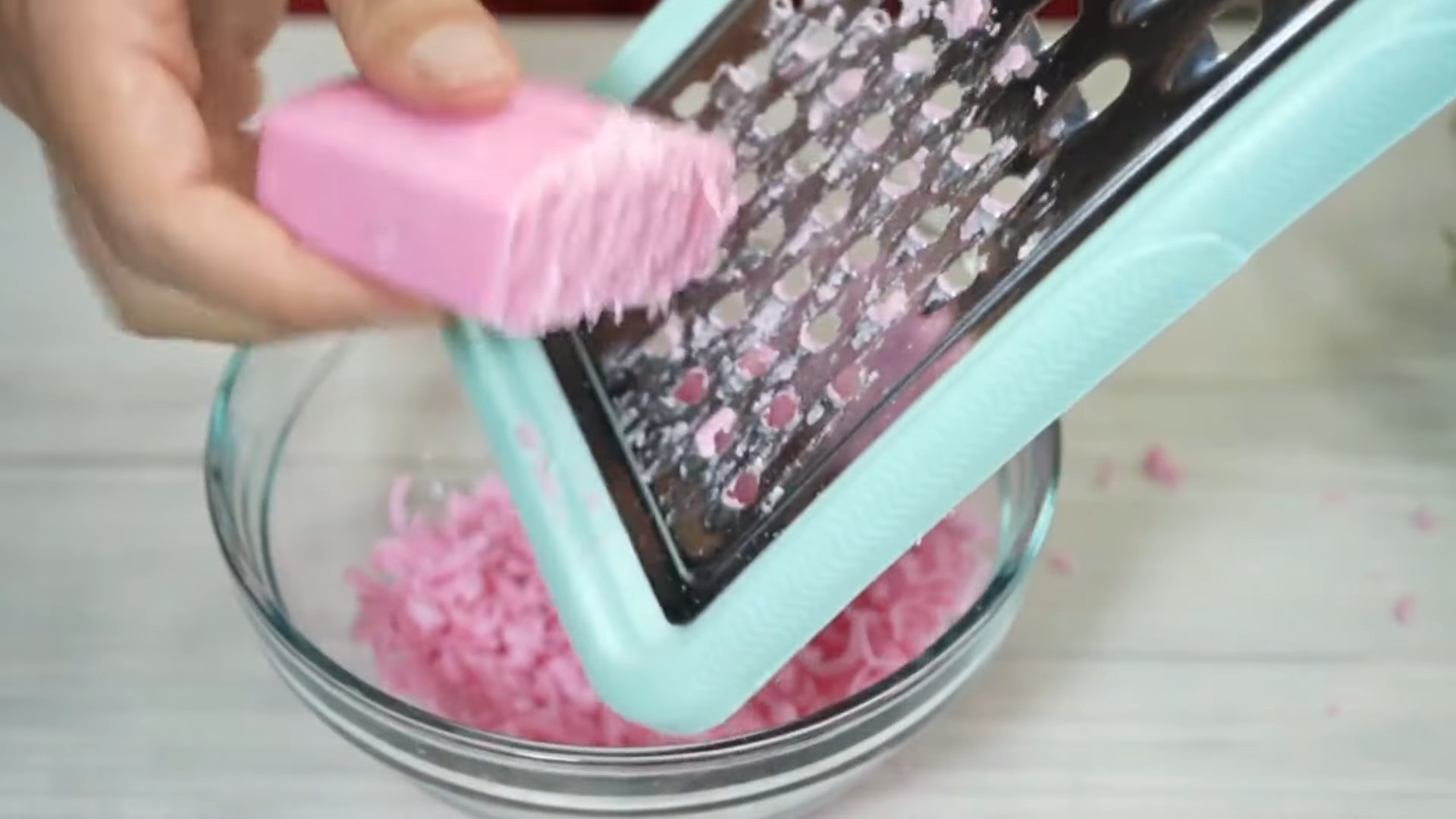
DIY Soap-Based Cleaning Solutions: A Guide to Sparkling Clean Without the Harsh Chemicals
Hey there, fellow DIY enthusiasts! I’m so excited to share some of my favorite soap-based cleaning solutions with you. I’ve been trying to reduce my reliance on harsh chemicals in my home, and I’ve found that good old soap can be surprisingly effective for a wide range of cleaning tasks. Plus, it’s generally safer for my family and the environment. Let’s dive in!
General Principles of Soap Cleaning
Before we get into specific recipes, let’s cover some basic principles. Soap works by emulsifying grease and dirt, allowing them to be washed away with water. However, it’s important to remember that soap is different from detergent. Detergents are synthetic surfactants, while soap is made from natural fats or oils and an alkali.
* Type of Soap Matters: I prefer using castile soap (like Dr. Bronner’s) for most of these recipes because it’s gentle, effective, and readily available. You can also use other natural soaps, but be sure to check the ingredients list to avoid anything with added fragrances or harsh chemicals.
* Hard Water Considerations: If you have hard water, soap can react with the minerals in the water and form a scummy residue. To combat this, you can add a water softener like borax or washing soda to your cleaning solutions. You can also use distilled water for mixing.
* Testing is Key: Always test your cleaning solution in an inconspicuous area before applying it to the entire surface. This will help you ensure that it doesn’t damage or discolor the material.
* Storage: Store your homemade cleaning solutions in labeled spray bottles or containers. I like to use glass bottles whenever possible to avoid plastic leaching.
All-Purpose Cleaner
This is my go-to cleaner for countertops, sinks, and other surfaces. It’s simple, effective, and smells great if you add essential oils.
What You’ll Need:
* 1/4 cup liquid castile soap
* 1 quart warm water
* 10-20 drops essential oil (optional, I like lemon, lavender, or tea tree)
* Spray bottle
Step-by-Step Instructions:
1. Combine Ingredients: In a spray bottle, combine the castile soap, warm water, and essential oil (if using).
2. Shake Well: Shake the bottle gently to mix the ingredients.
3. Spray and Wipe: Spray the solution onto the surface you want to clean and wipe with a clean cloth or sponge.
4. Rinse (Optional): If you’re cleaning a surface that comes into contact with food, you may want to rinse it with clean water after wiping.
Glass Cleaner
Say goodbye to streaks with this simple soap-based glass cleaner!
What You’ll Need:
* 1/4 teaspoon liquid castile soap
* 3 cups water
* Spray bottle
* Microfiber cloth
Step-by-Step Instructions:
1. Mix the Solution: In a spray bottle, combine the castile soap and water. It’s important to use very little soap to avoid streaks.
2. Shake Gently: Gently shake the bottle to mix the solution. Avoid creating too many bubbles.
3. Spray and Wipe: Spray the solution onto the glass surface and wipe with a clean microfiber cloth.
4. Buff Dry: If you see any streaks, buff the glass with a dry microfiber cloth.
Toilet Bowl Cleaner
This cleaner uses the power of soap and baking soda to tackle toilet bowl grime.
What You’ll Need:
* 1/2 cup baking soda
* 1/4 cup liquid castile soap
* 10-15 drops tea tree essential oil (optional, for its antibacterial properties)
* Toilet brush
Step-by-Step Instructions:
1. Sprinkle Baking Soda: Sprinkle the baking soda into the toilet bowl.
2. Add Soap and Oil: Pour the castile soap and essential oil (if using) over the baking soda.
3. Let it Fizz: Let the mixture fizz for a few minutes.
4. Scrub and Flush: Scrub the toilet bowl with a toilet brush and then flush.
Dish Soap
Making your own dish soap is easier than you think, and it’s much gentler on your hands.
What You’ll Need:
* 1 cup hot water
* 1/4 cup liquid castile soap
* 1 tablespoon washing soda (sodium carbonate)
* 1 teaspoon vegetable glycerin (optional, for added moisturizing)
* 10-15 drops essential oil (optional, I like lemon or grapefruit)
* Soap dispenser
Step-by-Step Instructions:
1. Dissolve Washing Soda: In a bowl, dissolve the washing soda in the hot water. Stir until completely dissolved.
2. Add Soap and Glycerin: Add the castile soap and vegetable glycerin (if using) to the bowl.
3. Add Essential Oil: Add the essential oil (if using) and stir gently to combine.
4. Pour into Dispenser: Pour the mixture into a soap dispenser.
5. Use as Usual: Use the dish soap as you would any other dish soap. You may need to use a bit more than you’re used to, as it doesn’t produce as many suds as commercial dish soaps.
Laundry Detergent
This laundry detergent is gentle on clothes and effective at cleaning.
What You’ll Need:
* 1 cup washing soda (sodium carbonate)
* 1 cup borax
* 1 bar castile soap, grated
* Essential oils (optional, for fragrance)
Step-by-Step Instructions:
1. Grate the Soap: Grate the castile soap using a cheese grater or food processor.
2. Combine Ingredients: In a large bowl, combine the washing soda, borax, and grated soap.
3. Add Essential Oils (Optional): Add a few drops of your favorite essential oils for fragrance.
4. Mix Well: Mix all the ingredients thoroughly.
5. Store in an Airtight Container: Store the laundry detergent in an airtight container.
6. Use 1-2 Tablespoons per Load: Use 1-2 tablespoons of the detergent per load of laundry, depending on the size and soil level of the load.
Floor Cleaner
Keep your floors sparkling clean with this simple soap-based floor cleaner.
What You’ll Need:
* 1/4 cup liquid castile soap
* 1 gallon warm water
* 1/4 cup white vinegar (optional, for extra cleaning power)
* Bucket
* Mop
Step-by-Step Instructions:
1. Combine Ingredients: In a bucket, combine the castile soap, warm water, and white vinegar (if using).
2. Mix Well: Mix the ingredients thoroughly.
3. Mop the Floor: Dip the mop into the bucket and wring out the excess water.
4. Mop the Floor: Mop the floor as usual, rinsing the mop frequently in the bucket.
5. Let it Dry: Allow the floor to air dry.
Hand Soap
This homemade hand soap is gentle and moisturizing.
Hey there, fellow DIY enthusiasts! I’m so excited to share some of my favorite soap-based cleaning solutions with you. I’ve been trying to reduce my reliance on harsh chemicals in my home, and I’ve found that good old soap can be surprisingly effective for a wide range of cleaning tasks. Plus, it’s generally safer for my family and the environment. Let’s dive in!
General Principles of Soap Cleaning
Before we get into specific recipes, let’s cover some basic principles. Soap works by emulsifying grease and dirt, allowing them to be washed away with water. However, it’s important to remember that soap is different from detergent. Detergents are synthetic surfactants, while soap is made from natural fats or oils and an alkali.
* Type of Soap Matters: I prefer using castile soap (like Dr. Bronner’s) for most of these recipes because it’s gentle, effective, and readily available. You can also use other natural soaps, but be sure to check the ingredients list to avoid anything with added fragrances or harsh chemicals.
* Hard Water Considerations: If you have hard water, soap can react with the minerals in the water and form a scummy residue. To combat this, you can add a water softener like borax or washing soda to your cleaning solutions. You can also use distilled water for mixing.
* Testing is Key: Always test your cleaning solution in an inconspicuous area before applying it to the entire surface. This will help you ensure that it doesn’t damage or discolor the material.
* Storage: Store your homemade cleaning solutions in labeled spray bottles or containers. I like to use glass bottles whenever possible to avoid plastic leaching.
All-Purpose Cleaner
This is my go-to cleaner for countertops, sinks, and other surfaces. It’s simple, effective, and smells great if you add essential oils.
What You’ll Need:
* 1/4 cup liquid castile soap
* 1 quart warm water
* 10-20 drops essential oil (optional, I like lemon, lavender, or tea tree)
* Spray bottle
Step-by-Step Instructions:
1. Combine Ingredients: In a spray bottle, combine the castile soap, warm water, and essential oil (if using).
2. Shake Well: Shake the bottle gently to mix the ingredients.
3. Spray and Wipe: Spray the solution onto the surface you want to clean and wipe with a clean cloth or sponge.
4. Rinse (Optional): If you’re cleaning a surface that comes into contact with food, you may want to rinse it with clean water after wiping.
Glass Cleaner
Say goodbye to streaks with this simple soap-based glass cleaner!
What You’ll Need:
* 1/4 teaspoon liquid castile soap
* 3 cups water
* Spray bottle
* Microfiber cloth
Step-by-Step Instructions:
1. Mix the Solution: In a spray bottle, combine the castile soap and water. It’s important to use very little soap to avoid streaks.
2. Shake Gently: Gently shake the bottle to mix the solution. Avoid creating too many bubbles.
3. Spray and Wipe: Spray the solution onto the glass surface and wipe with a clean microfiber cloth.
4. Buff Dry: If you see any streaks, buff the glass with a dry microfiber cloth.
Toilet Bowl Cleaner
This cleaner uses the power of soap and baking soda to tackle toilet bowl grime.
What You’ll Need:
* 1/2 cup baking soda
* 1/4 cup liquid castile soap
* 10-15 drops tea tree essential oil (optional, for its antibacterial properties)
* Toilet brush
Step-by-Step Instructions:
1. Sprinkle Baking Soda: Sprinkle the baking soda into the toilet bowl.
2. Add Soap and Oil: Pour the castile soap and essential oil (if using) over the baking soda.
3. Let it Fizz: Let the mixture fizz for a few minutes.
4. Scrub and Flush: Scrub the toilet bowl with a toilet brush and then flush.
Dish Soap
Making your own dish soap is easier than you think, and it’s much gentler on your hands.
What You’ll Need:
* 1 cup hot water
* 1/4 cup liquid castile soap
* 1 tablespoon washing soda (sodium carbonate)
* 1 teaspoon vegetable glycerin (optional, for added moisturizing)
* 10-15 drops essential oil (optional, I like lemon or grapefruit)
* Soap dispenser
Step-by-Step Instructions:
1. Dissolve Washing Soda: In a bowl, dissolve the washing soda in the hot water. Stir until completely dissolved.
2. Add Soap and Glycerin: Add the castile soap and vegetable glycerin (if using) to the bowl.
3. Add Essential Oil: Add the essential oil (if using) and stir gently to combine.
4. Pour into Dispenser: Pour the mixture into a soap dispenser.
5. Use as Usual: Use the dish soap as you would any other dish soap. You may need to use a bit more than you’re used to, as it doesn’t produce as many suds as commercial dish soaps.
Laundry Detergent
This laundry detergent is gentle on clothes and effective at cleaning.
What You’ll Need:
* 1 cup washing soda (sodium carbonate)
* 1 cup borax
* 1 bar castile soap, grated
* Essential oils (optional, for fragrance)
Step-by-Step Instructions:
1. Grate the Soap: Grate the castile soap using a cheese grater or food processor.
2. Combine Ingredients: In a large bowl, combine the washing soda, borax, and grated soap.
3. Add Essential Oils (Optional): Add a few drops of your favorite essential oils for fragrance.
4. Mix Well: Mix all the ingredients thoroughly.
5. Store in an Airtight Container: Store the laundry detergent in an airtight container.
6. Use 1-2 Tablespoons per Load: Use 1-2 tablespoons of the detergent per load of laundry, depending on the size and soil level of the load.
Floor Cleaner
Keep your floors sparkling clean with this simple soap-based floor cleaner.
What You’ll Need:
* 1/4 cup liquid castile soap
* 1 gallon warm water
* 1/4 cup white vinegar (optional, for extra cleaning power)
* Bucket
* Mop
Step-by-Step Instructions:
1. Combine Ingredients: In a bucket, combine the castile soap, warm water, and white vinegar (if using).
2. Mix Well: Mix the ingredients thoroughly.
3. Mop the Floor: Dip the mop into the bucket and wring out the excess water.
4. Mop the Floor: Mop the floor as usual, rinsing the mop frequently in the bucket.
5. Let it Dry: Allow the floor to air dry.
Hand Soap
This homemade hand soap is gentle and moisturizing.
What You’ll Need:
* 1/2 cup liquid castile soap
* 1/2 cup distilled water
* 1 tablespoon vegetable glycerin (optional, for added moisturizing)
* 10-15 drops essential oil (optional, I like lavender or tea tree)
* Soap dispenser
Step-by-Step Instructions:
1. Combine Ingredients: In a bowl, combine the castile soap, distilled water, and vegetable glycerin (if using).
2. Add Essential Oil: Add the essential oil (if using) and stir gently to combine.
3. Pour into Dispenser: Pour the mixture into a soap dispenser.
4. Use as Usual: Use the hand soap as you would any other hand soap.
Removing Soap Scum
Soap scum can be a problem, especially in hard water areas. Here’s how I tackle it:
What You’ll Need:
* White vinegar
* Spray bottle
* Scrub brush or sponge
Step-by-Step Instructions:
1. Heat the Vinegar: Heat the white vinegar in the microwave for a minute or two until it’s warm.
2. Spray the Surface: Pour the warm vinegar into a spray bottle and spray it onto the soap scum.
3. Let it Sit: Let the vinegar sit for 15-20 minutes to soften the soap scum.
4. Scrub and Rinse: Scrub the surface with a scrub brush
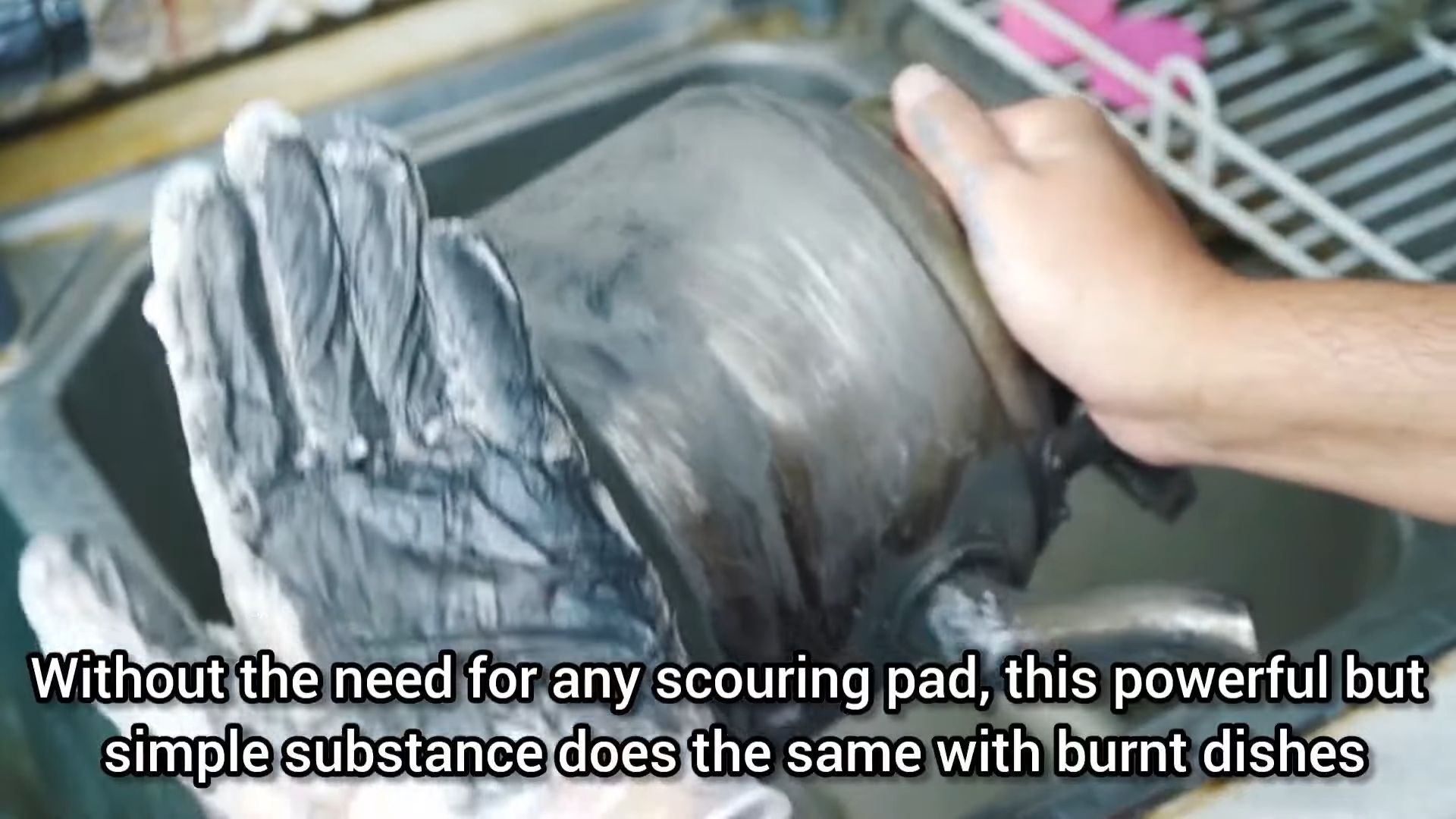
Conclusion
So, there you have it! Ditching harsh chemicals and embracing the simplicity of soap-only cleaning isn’t just a trend; it’s a powerful way to create a healthier, more sustainable home. We’ve explored how this back-to-basics approach can be surprisingly effective across a multitude of surfaces, from sparkling countertops to gleaming floors. The beauty of **soap only cleaning** lies in its versatility and the peace of mind it offers, knowing you’re not exposing yourself, your family, or your pets to potentially harmful substances.
But why is this a must-try? Beyond the health and environmental benefits, it’s incredibly cost-effective. Think about it: a single bar of castile soap or a bottle of liquid soap concentrate can replace a whole cabinet full of specialized cleaners. That’s a win for your wallet and a win for the planet! Plus, the simplicity of the process is incredibly liberating. No more deciphering complicated labels or worrying about mixing the wrong chemicals.
Ready to take it a step further? Consider infusing your soap solution with essential oils for added cleaning power and a delightful aroma. Lemon, tea tree, and eucalyptus oils are known for their antibacterial and antifungal properties, making them excellent additions to your cleaning arsenal. You can also experiment with different types of soap to find what works best for your specific needs. Castile soap is a popular choice for its gentle yet effective cleaning abilities, while dish soap can be great for tackling greasy messes.
Don’t be afraid to adjust the dilution ratios to suit the level of cleaning required. For light cleaning, a weaker solution will suffice, while tougher stains may require a more concentrated mixture. Always test your soap solution on an inconspicuous area first to ensure it doesn’t damage the surface.
We truly believe that once you experience the effectiveness and simplicity of soap-only cleaning, you’ll never go back to harsh chemicals. It’s a small change that can make a big difference in your health, your home, and the environment.
So, what are you waiting for? Grab your soap, water, and a cleaning cloth, and get ready to experience the joy of a truly clean home, the natural way. We’re confident you’ll be amazed by the results.
We’d love to hear about your experiences with soap-only cleaning! Share your tips, tricks, and before-and-after photos in the comments below. Let’s build a community of conscious cleaners and inspire others to embrace this simple yet powerful approach to a healthier home. What surfaces did you find it worked best on? Did you experiment with any essential oil combinations? We’re eager to learn from your experiences!
Frequently Asked Questions (FAQ)
What kind of soap should I use for soap-only cleaning?
The best type of soap for soap-only cleaning depends on the specific task at hand. Castile soap is a fantastic all-purpose option, known for its gentle yet effective cleaning power. It’s made from vegetable oils, making it biodegradable and safe for most surfaces. Liquid dish soap, especially those formulated with natural ingredients, can be effective for tackling greasy messes in the kitchen. Avoid soaps with added fragrances, dyes, or harsh chemicals, as these can defeat the purpose of switching to a natural cleaning method. Always read the label carefully to ensure the soap is suitable for the surface you intend to clean. For example, some delicate surfaces might require a very mild soap solution.
Is soap-only cleaning effective against bacteria and viruses?
While soap itself doesn’t “kill” bacteria and viruses in the same way that disinfectants do, it’s still highly effective at removing them from surfaces. Soap molecules work by disrupting the lipid membranes that surround bacteria and viruses, effectively lifting them away from the surface so they can be rinsed away with water. The act of washing with soap and water is crucial for removing these pathogens. For situations where disinfection is paramount, such as cleaning surfaces after someone has been sick, you may want to consider using a natural disinfectant like vinegar or hydrogen peroxide in addition to soap. However, for everyday cleaning, soap and water are generally sufficient for maintaining a clean and healthy home.
Can I use soap-only cleaning on all surfaces?
While soap-only cleaning is generally safe for most surfaces, it’s always a good idea to test it on an inconspicuous area first, especially on delicate or porous materials. Some surfaces, such as unfinished wood or natural stone, may be more susceptible to water damage or staining. Acidic cleaners like vinegar might be better suited for certain surfaces, such as removing hard water stains from shower doors. Always research the specific cleaning requirements of different materials before using any cleaning product, including soap.
How do I make a soap-only cleaning solution?
Making a soap-only cleaning solution is incredibly simple. For an all-purpose cleaner, mix 1-2 tablespoons of liquid castile soap or dish soap with 1 gallon of warm water. You can adjust the concentration depending on the level of cleaning required. For tougher stains, you can use a more concentrated solution. For a spray cleaner, mix 1/4 cup of liquid soap with 1 quart of water in a spray bottle. Add a few drops of your favorite essential oils for added cleaning power and a pleasant scent. Shake well before each use.
What are the benefits of adding essential oils to my soap-only cleaning solution?
Essential oils offer a range of benefits when added to soap-only cleaning solutions. Many essential oils, such as lemon, tea tree, eucalyptus, and lavender, have natural antibacterial, antifungal, and antiviral properties, which can enhance the cleaning power of your soap solution. They also provide a natural and pleasant scent, making your home smell fresh and clean without the use of synthetic fragrances. Furthermore, some essential oils, like lemon and orange, have degreasing properties, making them effective for tackling greasy messes in the kitchen. When choosing essential oils, be sure to select high-quality, pure essential oils from a reputable source.
How often should I clean my home using soap-only cleaning?
The frequency of cleaning depends on your lifestyle and the level of activity in your home. High-traffic areas, such as kitchens and bathrooms, may require daily or weekly cleaning, while other areas, such as bedrooms and living rooms, may only need to be cleaned every few weeks. Pay attention to areas that tend to accumulate dirt, dust, and grime, and clean them as needed. Regular cleaning with soap and water can help prevent the buildup of dirt and bacteria, keeping your home clean and healthy.
What if soap only cleaning leaves streaks on my surfaces?
Streaking can sometimes occur with soap-only cleaning, especially on shiny surfaces like mirrors and windows. This is often due to hard water or using too much soap. To prevent streaking, use distilled water instead of tap water when making your cleaning solution. You can also try using a microfiber cloth to wipe down the surface after cleaning, as microfiber cloths are excellent at removing streaks and leaving a streak-free shine. Another tip is to use a very small amount of soap in your cleaning solution. Remember, a little goes a long way!
Can I use soap-only cleaning in my laundry?
Yes, soap-only cleaning can be used for laundry! Castile soap is a popular choice for making homemade laundry detergent. Simply add 1/4 to 1/2 cup of liquid castile soap to your washing machine, along with 1/2 cup of washing soda (sodium carbonate) for added cleaning power. You can also add a few drops of essential oils for a fresh scent. Be sure to use a low-suds soap to avoid excessive suds in your washing machine. For delicate fabrics, use a gentler soap and wash on a delicate cycle.
Is soap-only cleaning safe for pets and children?
One of the biggest advantages of soap-only cleaning is its safety for pets and children. Unlike harsh chemical cleaners, soap is generally non-toxic and won’t pose a health risk if accidentally ingested or inhaled. However, it’s still important to keep cleaning solutions out of reach of children and pets. When cleaning, ensure that the area is well-ventilated to prevent any potential irritation from the soap fumes. Always rinse surfaces thoroughly after cleaning to remove any soap residue.
How does soap-only cleaning contribute to a more sustainable lifestyle?
Soap-only cleaning is a significant step towards a more sustainable lifestyle. By reducing your reliance on harsh chemical cleaners, you’re minimizing your exposure to potentially harmful substances and reducing the amount of toxic waste that ends up in the environment. Soap is often biodegradable and made from renewable resources, making it a more environmentally friendly choice than synthetic cleaners. Furthermore, by making your own cleaning solutions, you can reduce your consumption of plastic bottles and packaging, further minimizing your environmental impact. Embracing soap-only cleaning is a simple yet powerful way to contribute to a healthier planet.

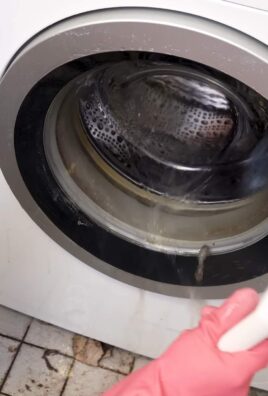
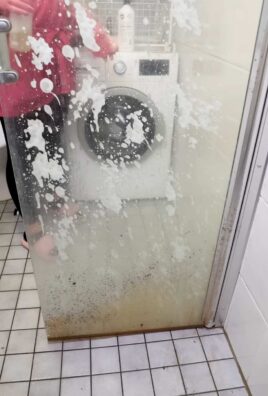
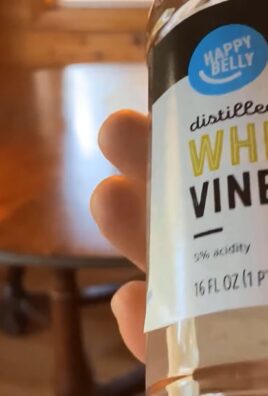
Leave a Comment